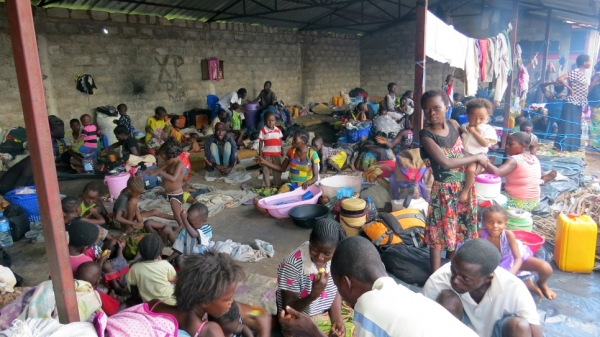From 13 to 23 June 2017, a team of the United Nations Human Rights Office (OHCHR) was deployed to Angola to interview refugees who had fled atrocious attacks launched between 12 March and 19 June 2017 in the Kamonia territory, in the Greater Kasai area.
Greater Kasai is a central region of the Democratic Republic of the Congo (DRC) which until recently had remained extraneous to the intercommunal conflict that has terrorised other parts of the country at the turn of the century.
The origin of the crisis in this area lies in a disagreement between government and local tribes over chieftaincy and traditional authority in several villages in the Kasai Central province. In April 2016, the refusal of central authorities to recognize Jean-Pierre Mpandi, alias Kamuina Nsapu, as hereditary chief of the Bajila Kasanga chieftaincy in Kasai Central, generated the Kamuina Nsapu supporters’ insurrection. On 12 August 2016, Mpandi was killed by Congolese security forces, and this event represented the turning point of the conflict. What began as small skirmishes turned into a real enemies’ hunt.
The OHCHR report is significant in that it shows that, since April 2017, the crisis in Kasai took a more pronounced and alarming ethnic dimension.
About the actors, the team talks about three different perpetrators: the anti-Government militia, Kamuina Nsapu, a pro-Government militia, namely Bana Mura, and a DRC government armed forces, called the Forces armées de la République démocratique du Congo (FARDC).
While at the outset, the Kamuina Nsapu principally targeted State agents and individuals suspected of sorcery, they then started to conduct planned attacks on individuals due to their ethnic identity. In particular, the anti-Government militia assaulted Tchokwe, Pende and Tetela communities accused to be associated with the Congolese government defence forces. On the other hand, the Bana Mura militia started to commit grave, systematic and large scale human rights abuses against the Luba and Lulua communities, accusing them of being accomplices of the Kamuina Nsapu militia. On its side, according to survivors’ records, the DRC military armed and supported the pro-Government militia and, on occasion, led them in fighting the Kamuina Nsapu. Some witnesses also asserted that the Kinshasa security force did not distinguish between militia and the wider civilian population, whilst the United Nations accused them of digging most of the 80 mass graves it has identified.
Abuses and methods described are cruel and violent on all sides. On the one hand, in all incidents documented, the Kamuina Nsapu were reported to have used and recruited boys and girls as fighters, forcing them to drink blood of victims within claimed magic rituals. Moreover, according to some interviewees, Kamuina Nsapu publically executed and subsequently decapitated DRC’s soldiers and State employees. Furthermore, the anti-government militia also hunt down any person involved in witchcraft which they feared could be used against them. On the opposite side, according to some Luba refugees, the Bana Mura attacked Luba and Lulua inhabitants, beheading, mutilating and shooting victims, and in some cases burning them alive. In addition, ferocious cases of sexual and gender attacks, including mass rape, were reported. Some survivors also described FARDC soldiers asking the population to dig graves where the individuals they had executed were then buried, strengthening the belief that the DRC government is an accomplice in the massacre.
The OHCHR team found that, between 12 March and 19 June, human rights violations and abuses, such as summary executions, mutilations, rape and destruction of property had been committed against at least 282 victims, including 113 women and 68 children. The Bana Mura were responsible for 171 victims, the Kamuina Nsapu for 86 and the DRC’s soldiers for 25. Despite that, the actual number of violations and abuses may be much higher than those documented, due to the time limits of the investigations and the inability to visit areas where the violations and abuses had occurred, due to security reasons.
According to these findings, the team of investigators asserts that the human rights violations and abuses documented constitute criminal offences under DRC criminal law and may amount to crimes under international law. Consequently, they asked the government of DRC to take all necessary measures to fulfil its primary role to protect the population of all ethnic backgrounds in the Greater Kasai area, such as conduct transparent and independent investigation, take prompt and immediate action to disband and disarm the militias, promote community reconciliation initiatives and so on.
Notwithstanding, the described situation seems even more serious due to the general political tensions already heightened by President Joseph Kabila's refusal to step down beyond the end of his mandate, in December 2016. Within this framework, the ongoing heinous conflict may lead to the indefinite deferral of the presidential elections based on security grounds, with a consequent endless instability in an already wounded country.
To read more, visit:
www.ohchr.org/Documents/Countries/Africa/OHCHRMissionreportonaccountsofKasairefugees.docx







